Table of Contents
ToggleFor high-income earners, tax season can feel like a game of dodgeball—everyone’s throwing numbers at you, and it’s hard to know which ones to catch. But what if there were strategies that could help keep more of your hard-earned cash in your pocket? Spoiler alert: there are!
Overview Of Tax Saving Strategies For High Income Earners
High-income earners can take advantage of several effective tax-saving strategies to reduce their taxable income. Contributing to retirement accounts remains one of the most popular methods. For example, maxing out contributions to a 401(k) allows individuals to defer taxes on income now while saving for the future.
Utilizing health savings accounts (HSAs) also presents significant tax benefits. Funds deposited into HSAs are tax-deductible, and withdrawals for qualified medical expenses incur no tax. This dual advantage helps high-income earners control healthcare costs and save money on taxes simultaneously.
Charitable contributions represent another method for tax savings. Donations to eligible charities give individuals a way to deduct contributions from their taxable income. High-income earners can significantly reduce tax liabilities through planned giving strategies, such as donor-advised funds.
Investing in tax-advantaged accounts, like IRAs, also serves as an avenue for reducing taxable income. Roth IRAs, for instance, offer tax-free growth on investments and tax-free withdrawals during retirement when specific conditions are met. This long-term strategy allows wealth accumulation while lowering current tax obligations.
Lastly, monitoring capital gains and losses plays a crucial role in tax planning. Selling underperforming investments can offset capital gains, reducing overall taxable income. This proactive approach helps manage tax liabilities effectively.
By employing these strategies, high-income earners can maximize their financial resources while navigating the complexities of the tax system. Multiple avenues exist, each tailored to suit individual financial situations and goals.
Common Tax Challenges Faced By High Income Earners

High-income earners encounter various tax challenges each year. Understanding these challenges is crucial for effective tax management.
High Tax Brackets
High-income earners often fall into the highest tax brackets, facing marginal tax rates that can exceed 37%. Above certain income levels, each additional dollar contributes to a larger tax burden. Navigating these brackets requires strategic planning. Tax deductions and credits can help lower taxable income, though many credits phase out as income rises. Knowing how to leverage itemized deductions, such as mortgage interest and state taxes, can make a significant difference. Furthermore, tax laws can frequently change, creating additional complexities. Staying informed about bracket adjustments ensures financial strategies align with current regulations.
Investment Income Taxes
Investment income taxes pose additional challenges for high-income earners. Capital gains tax rates can reach 20% for those in higher brackets. Short-term gains, taxed as ordinary income, can substantially impact overall tax liabilities. Strategies such as tax-loss harvesting can offset gains with losses, providing potential tax savings. Understanding the nuances of qualified dividends, which receive favorable tax treatment, is vital for effective investment management. Real estate or other alternative investments may offer strategies to defer or minimize taxes through like-kind exchanges. Reviewing the composition of investment portfolios regularly aids in managing tax exposure efficiently.
Effective Retirement Account Strategies
High-income earners can effectively manage their taxes through strategic retirement account contributions. Utilizing these accounts helps in deferring tax liabilities and maximizing savings.
401(k) Contributions
Maximizing contributions to a 401(k) plays an essential role in reducing taxable income. Participants can contribute up to $20,500 in 2022, while those aged 50 and older can add an extra $6,500, allowing greater tax deferral. Employers may also offer matching contributions, enhancing the overall savings potential. Understanding the limits and features of the plan aids in capitalizing on this tax-advantaged account. This deferral means that earnings grow tax-free until withdrawal, commonly during retirement when income may decrease.
Traditional vs. Roth IRA
Choosing between a Traditional IRA and a Roth IRA depends on an individual’s tax situation. Contributions to a Traditional IRA may be tax-deductible, reducing taxable income in the current year. In contrast, Roth IRA contributions occur with after-tax dollars, allowing for tax-free withdrawals in retirement, provided certain conditions are met. High-income earners face income limits for Roth IRA contributions, making strategic planning crucial. Balancing contributions between these accounts can optimize tax benefits based on current and future income expectations.
Utilizing Tax Deductions And Credits
High-income earners can leverage tax deductions and credits to reduce their overall tax burden. Strategic use of these tools can lead to significant savings.
Itemized Deductions
Itemized deductions present opportunities to lower taxable income. Common deductions include mortgage interest, property taxes, and medical expenses exceeding 7.5% of adjusted gross income. High-income earners often benefit from deducting state and local taxes, capped at $10,000. Taxpayers may also write off charitable contributions, which can create both philanthropic impact and financial benefit. When deductions exceed the standard deduction, itemizing becomes a preferred approach for maximizing tax savings. This strategy helps individuals focus on expenses that directly decrease their taxable income.
Tax Credits For Education And Dependents
Tax credits can provide immediate relief, reducing tax owed dollar-for-dollar. Various education credits, like the American Opportunity Credit and Lifetime Learning Credit, assist taxpayers with qualified tuition expenses. Families may also benefit from the Child Tax Credit, which offers up to $2,000 per qualifying child. Additional credits, including the Dependent Care Credit, help offset childcare costs. Certain credits phase out at higher income levels, making it crucial for high-income earners to evaluate eligibility. Utilizing these credits creates substantial savings while supporting dependents’ needs.
Strategic Investment Choices
High-income earners can optimize their tax situations through strategic investment choices. Focusing on tax-deferred accounts and understanding long-term capital gains provides effective avenues for tax savings.
Tax-Deferred Accounts
Tax-deferred accounts, such as traditional 401(k)s and IRAs, allow individuals to contribute pre-tax income. Contributions reduce taxable income for the year, offering substantial savings. Tax on investment gains in these accounts isn’t due until funds are withdrawn, enabling compound growth without immediate tax implications. Contribution limits for a 401(k) in 2022 reach $20,500, with an added $6,500 for those aged 50 and older. Employing this strategy can significantly lower current tax liabilities and provide financial benefits during retirement.
Long-Term Capital Gains
Long-term capital gains tax rates apply to assets held for over a year. These rates tend to be lower than ordinary income tax rates, offering substantial savings for investors. For 2022, long-term capital gains rates typically range from 0% to 20%, depending on taxable income. Understanding the difference between short-term and long-term gains is crucial. Short-term gains, taxed as ordinary income, can reach rates above 37% for high-income earners. Holding investments longer not only benefits tax exposure but also increases the potential for significant wealth accumulation.
Estate Planning And Wealth Transfer
Effective estate planning ensures that high-income earners can manage wealth transfer while minimizing tax burdens. Consider the following strategies.
Trusts And Estate Taxes
Trusts provide high-income earners a means to control and protect assets. Utilizing revocable trusts allows individuals to adjust terms during their lifetime, while irrevocable trusts often shield assets from estate taxes. Assets in irrevocable trusts typically don’t enter the estate, reducing overall tax liability during transfer. According to current IRS regulations, individuals can pass up to $12.92 million per person in 2023 without incurring federal estate taxes. Properly structured trusts can maximize benefits, allowing for strategic distribution to heirs without immediate tax implications.
Gifting Strategies
Gifting strategies offer high-income earners an effective tool for wealth transfer and tax reduction. Individuals can gift up to $17,000 per recipient in 2023 without incurring gift taxes. This annual exclusion allows for substantial wealth transfer while maintaining lower estate values. Additionally, lifetime gifting exemptions encourage early transfer of wealth, with amounts exceeding $12.92 million subject to taxes. Careful planning around capital gains and appreciated assets during gifting can minimize tax consequences. By utilizing gifting, high-income earners can ensure that beneficiaries receive funds while benefiting from significant tax advantages.
High-income earners face unique tax challenges but can leverage various strategies to minimize their tax burdens. By maximizing contributions to retirement and health accounts as well as utilizing deductions and credits, they can effectively reduce taxable income.
Investing in tax-advantaged accounts and understanding capital gains can lead to significant savings. Additionally, strategic estate planning and gifting can further enhance wealth transfer while minimizing taxes.
With careful planning and informed decisions, high-income earners can navigate the complexities of the tax landscape and retain more of their hard-earned income.



